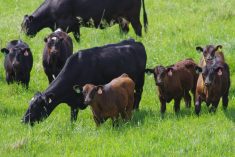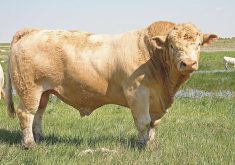Pea acreage in Alberta has shifted south in recent years and researchers want to zero in on factors that can increase the incidence of fusarium root rot
You can help researchers learn more about fusarium root rot in peas by offering up your field for research.
Traditionally, Red Deer and Lacombe have been the primary area for peas, but things have changed in recent years and about half of the pea acreage is now in southern Alberta.
“When I started at this research station and started talking to growers and other researchers, it seemed pretty clear that fusarium root rot of peas was a growing issue,” said Syama Chatterton, a plant pathologist with Agriculture and Agri-Food Canada in Lethbridge who is heading the new study.
Read Also

Grazing ‘sweet spot’ boosts pasture performance
Timing-focused approach to pasture management touted to boost forage growth, livestock gains while also cutting farmer labour and inputs
The survey will compare the incidence and severity of root rot in different growing environments, soil types, and weather conditions. Once producers who are interested in participating contact her, Chatterton will send a researcher out to their fields to dig up pea roots from 10 random locations for lab analysis.
“It’s hard to assign the roots a rating because they are full of soil and you can’t see how much rot is present so we take them back to the lab, wash them, clean them and give them a root rot rating,” she said.
Producers of any colour or variety of peas can participate. They’ll need to provide land location and GPS co-ordinates of their pea fields, the history of the fields, as well as information on growing practices and cultivar selection.
“A lot of growers have more than one field and we don’t want to do all the fields for one grower,” said Chatterton.
“So after we’ve chosen the field that we’ll do, we will follow up with the grower by asking them to answer a few questions on crop history, tillage type and that sort of thing to see if there’s anything that really stands out as a key factor in predicting the risk of root rot.”
Pea root rot has several identifying symptoms including poor emergence and patchy distribution. Late season root rot is indicated by patches of stunted peas, yellow patches in the field, and stand collapse after flowering. Growers who pull up the plant and open up the root to look at the vascular system will see a red streak inside the plant. Root rot lowers yield and interferes with nodulation and nitrogen fixation, so producers lose some of the nitrogen benefits. Root rot also reduces plant biomass, and makes plants more difficult to harvest.
To prevent root rot, produce can use good management practices, rotate their crops, make good field selections, and use seed treatments.
“These root rot pathogens are opportunistic pathogens, so they need a plant that is a little bit stressed in order to infect it,” said Chatterton.Other researchers involved with the study include Robyn Bowness from the Alberta Agriculture, Lacombe, and Mike Harding from the Crop Diversification Centre in Brooks. The three researchers have split up the province and will be surveying fields in their area. The survey will run for the next two years and is part of a four-year project.
Pea producer wanting to participate in this survey can contact Syama Chatterton at [email protected] or at 403-317-2226.















